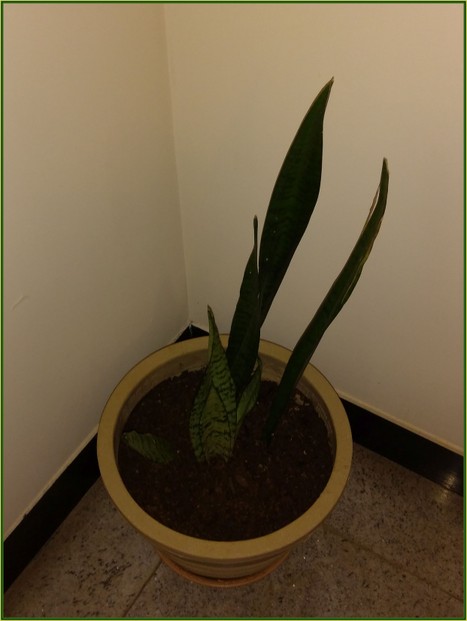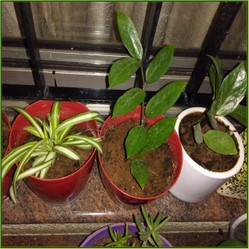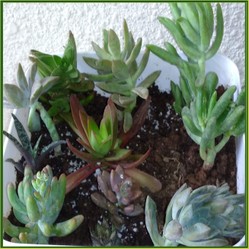According to NASA scientists, we live and inhale some of the poisonous gases indoors that come packaged with furniture, soap, furnishing, detergents and lack circulation. Many factors contribute to indoor pollution viz air conditioning, fresh paints on walls, cosmetics and our furniture that is treated with chemicals.
A NASA scientist while researching on how to keep the space station clean happened to zero on our common forgotten house plants that come to our aid without our knowledge. To his surprise he found that ornamental plants, in addition to looking beautiful are doing us a great deal of service. Not only do they produce oxygen in broad daylight, they help to eliminate the harmful gases indoors.
© copyright WriterArtist 2019, All rights reserved
Image from WriterArtist























 Harvest Bounty of Fall Fruitson 08/03/2023
Harvest Bounty of Fall Fruitson 08/03/2023
 Is Buddhism older than Hinduism?on 06/13/2023
Is Buddhism older than Hinduism?on 06/13/2023
 Was Tirumala Tirupati Balaji Temple a Buddhist Shrine?on 06/13/2023
Was Tirumala Tirupati Balaji Temple a Buddhist Shrine?on 06/13/2023
 The Great Wave of Kanagawa from Japanese Artist Hokusaion 06/11/2023
The Great Wave of Kanagawa from Japanese Artist Hokusaion 06/11/2023



Have you considered adding indoor plants for reducing air pollution?
@blackspanielgallery Good to know that Radon escapes from the cracks of alluvial deposits from homes. I always thought, the radioactive gases to be very harmful for human race.
@DerdriuMarriner - I have two Sensevieria, one is indoors and other outdoors. My outdoor plant is doing very well, It has thrown offshoots but the inside one is slow. I may have to take it outdoors. The pot is heavy and difficult to move.
Yes - keeping the air inside garages, balconies and basements with these plants is a good idea. However; one must take them outdoors once in a while.
Coming to the movie, someday I might pick up courage to watch a scary one.
@Tolovaj - Nothing better than living amidst greenery. You are lucky to have woods nearby.
Sure I did. The quality of air in my apartment is top priority to me. Luckily I live close enough to the woods and we have a good number of trees in the city too. But it's always a place for improvement. Thanks, WriterArtist, for your valuable info!
WriterArtist, Thank you for the practical information and, especially from Costa Farms, the product lines.
Is your beautiful sansevieria healthy from direct or reflected light?
Isn't it wonderful the way houseplants can do indoors what trees do so generously outdoors? I love the scenes in one of my few favorite scary movies, When a stranger calls, where Camilla Belle moves around and through the indoor garden with its phytoremediating plants.
You mention that "One should remember to ensure healthy plants, it is necessary to keep them outdoors every alternate week or at least after a month for a period of 7 to 14 days depending upon their health and climate conditions." Wouldn't that be a lovely way to clear the air around garages, on balconies and flat roofs and outside basements?
Radon does not need a source from man, it occurs naturally as heavy elements break down. Since it is a gas it creeps upward, and can even pass through bedrock into home foundations where houses are right on rocks. Here, it is not a problem since we have alluvial deposits which are porous, so it simply migrates out from under homes.
@ blackspanielgallery - Your reasoning is logical. A plant that absorbs poisonous gas may become poisonous due to the inherent reason of absorbing poison. Although the VOC are broken, most of these plants are poisonous in nature.
Man-made "Radioactive pollution" occurs due to mining and nuclear explosions. Radon and plutonium are dangerous elements and it is best to distance yourself from such substances. Research is ongoing to find out which plants can absorb radioactive contamination. The unfortunate side of this "Phytoremediation" is that it takes relatively longer time and the question of where should these plants be disposed of is of utmost importance. If left unattended, they will lead to poisoning of food chain.
I have heard of absorption of carbon dioxide and the release of oxygen. If other substances are absorbed they, or their elements from which they are made, must show up as part of the absorbing plant, or be released back as oxygen is. This makes a plant that absorbs poisonous compounds more likely, if the compounds are not broken down, to itself become poisonous.
One harmful element, radon, creeps through the Earth into homes from below. It is not possible, even if absorbed, to make radon lose its radioactivity. It is one element that we must deal with and have no help from plants. Ventilation is the only defense.